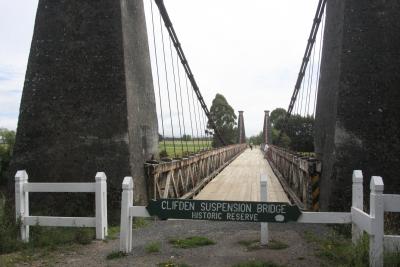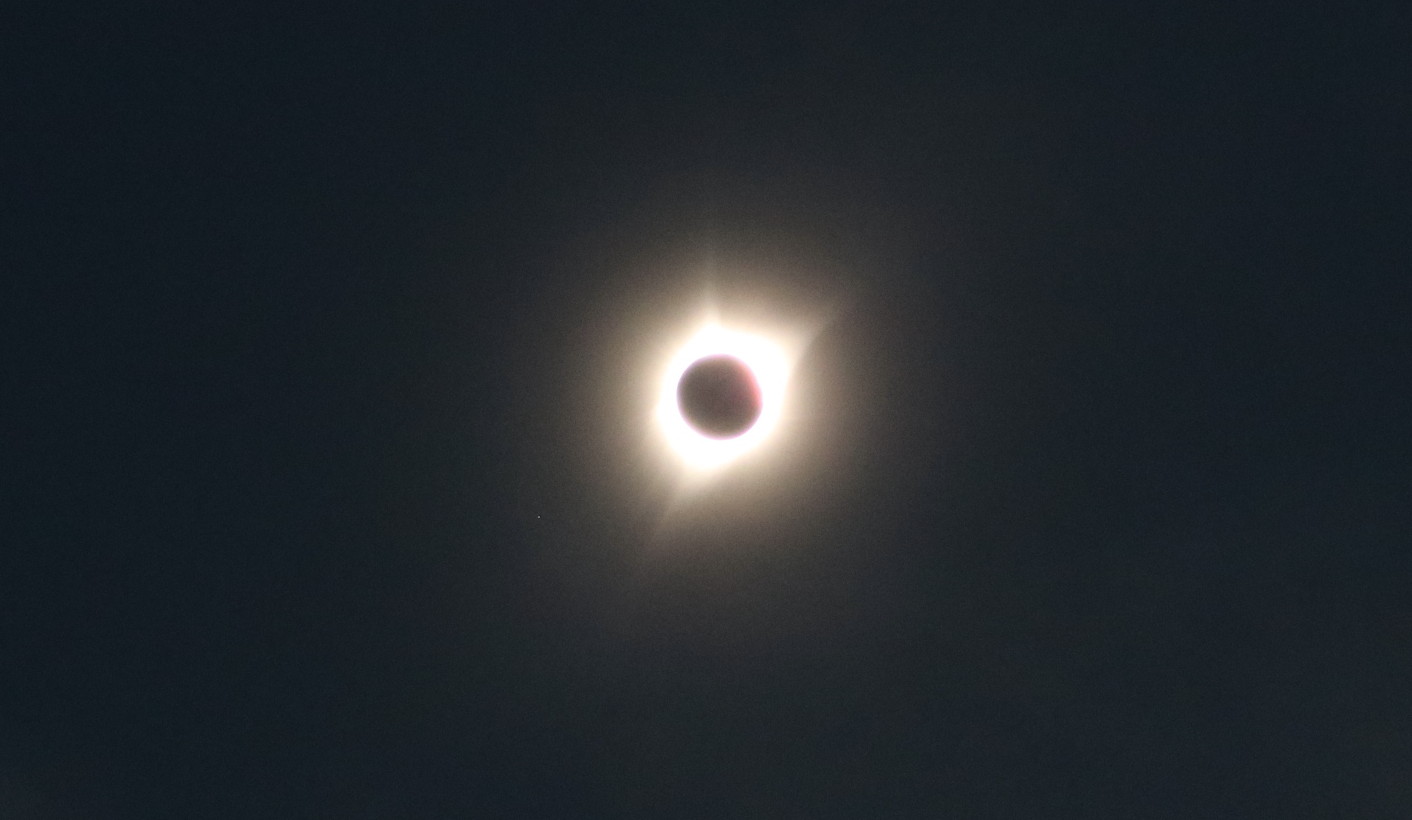Te Anau to Invercargo – The Scenic Route
 There are two ways to get from Te Anau to Invercargo. The fast route is inland and shorter but the scenic route is recommended by the guide books and it is designated as a scenic route by New Zealand so we’re taking the scenic route. The route stays close to but not in Fiordland National Park, running along the eastern side of the mountain range. Still, the glacial evidence abounds on this side of the mountains. The valley is broad and flat and the road is good for a scenic road. Being glacial in nature, the soil is loaded with rocks of varying sizes and isn’t suitable for tillage.
There are two ways to get from Te Anau to Invercargo. The fast route is inland and shorter but the scenic route is recommended by the guide books and it is designated as a scenic route by New Zealand so we’re taking the scenic route. The route stays close to but not in Fiordland National Park, running along the eastern side of the mountain range. Still, the glacial evidence abounds on this side of the mountains. The valley is broad and flat and the road is good for a scenic road. Being glacial in nature, the soil is loaded with rocks of varying sizes and isn’t suitable for tillage.
We see many pastures with sheep and cattle but we also see numerous pastures with deer and elk. Deer and elk are raised as alternative domestic animals. Herd sizes of 100 to 200 are not uncommon. Louise did some research to find out the economic value of deer and elk. The obvious answer would be meat but it turns out that isn’t the primary use for these animals. When their antlers first grow each season they are covered in a fleshy covering called velvet. The velvet contains a growth hormone which is valuable for helping to heal wounds. It is used Asia and to an increasing extent in the US. The growth hormone helps heal joints and tendons.
At one stop I notice a very strange landform, a large hill at the base of the mountain range which has a nearly horizontal top, similar to a butte or plateau. This is a large flat topped plateau coming off the side of the mountain range. After several more of these it became obvious that what I was looking at were deposits that accumulated in a glacial lake. The lake has since drained but the old coastline and coastal deposits were obvious along both sides of the valley. Glacial lakes will fill with sediment eventually filling in completely. In this case, the dam that held back the waters of the lake either melted or was washed away, much like the movie, Ice Age the Meltdown.
As lunchtime approached we saw a marker indicating a roadside park so we pulled off. The roadside park was also the site of The Clifden Suspension bridge which was completed in 1899. At the time it was the longest suspension bridge in New Zealand. It is no longer open to traffic but is used as a walking bridge. The bridge deck had recently been resurfaced with new boards. The 115 year old cables showed their age but the bridge was still sound. We walked across as did many other travelers in the time we were there for lunch.
On the tall piers supporting the cables were several plaques. One caught my attention. It commemorated those killed in the field during World War I. The plaque also listed two who died while in service, one in a hospital and another in an accident near the front. It didn’t stop there it listed all those from the Clifden area who had served during WW I. On our walk across the bridge we encountered a couple from Great Britain and in our discussion, the lady mentioned the above fact. We agreed that it was a nice tribute to their veterans. After all, everyone who served had put their life on the line serving in the war. This is true of any war, our veterans are people who have stepped forward and in essence said they would give their life for their country. Even if they weren’t killed, simply signing up and serving honorably during a time of war is an act of great bravery and is absolutely necessary to maintaining our freedom.
We pulled into Invercargo late in the afternoon. This was the largest city we’d seen since we left the ferry and headed down the western side of the South Island. Most of the towns along this route reminded me of the tourist towns along the Alaska Highway. Small towns with, a few souvenir shops, a museum, a grocery store of some kind, a gas station, an RV park and maybe a restaurant or bar.



0 Comments
Recommended Comments
There are no comments to display.
Please sign in to comment
You will be able to leave a comment after signing in
Sign In Now